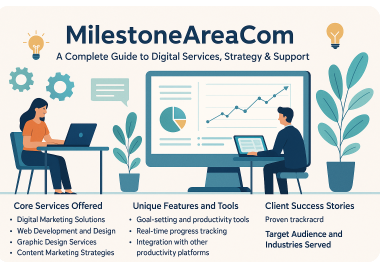In today’s fast-paced world, musculoskeletal issues are becoming increasingly common. Whether it’s a nagging backache or persistent joint pain, these problems can significantly impact your daily life. Fortunately, physiotherapy offers a beacon of hope for those seeking relief and rehabilitation. With advancements in treatment methods, innovative physiotherapy techniques are reshaping how we approach pain management and recovery.
At Medical Health Point, we’re dedicated to exploring cutting-edge therapies that not only alleviate discomfort but also enhance overall quality of life. This blog post delves into the importance of specialized care and highlights the latest innovations in the field of physiotherapy—an essential resource for anyone striving to regain mobility and vitality. Join us on this journey as we uncover effective strategies tailored to address your unique needs!
Understanding the Importance of Physiotherapy
Physiotherapy plays a crucial role in managing and preventing musculoskeletal issues. It focuses on restoring movement, improving function, and enhancing overall well-being.
Many people underestimate the importance of early intervention. Addressing pain or discomfort promptly can prevent further complications down the road. Physiotherapists are trained professionals who assess individual needs and create personalized treatment plans.
This field combines knowledge of anatomy with practical skills. Techniques such as manual therapy, exercise prescription, and education empower patients to take charge of their health.
Traditional vs. Innovative Physiotherapy Techniques
Traditional physiotherapy techniques often rely on established methods such as manual therapy, ultrasound, and electrotherapy. These approaches focus on alleviating pain and restoring function through time-tested practices. Patients typically benefit from hands-on treatment that emphasizes muscle manipulation, stretching, and strengthening exercises.
In contrast, innovative physiotherapy techniques harness modern technology and scientific advancements. Techniques like dry needling, myofascial release, and robotic-assisted rehabilitation are gaining popularity. They offer targeted relief by addressing specific pain points more effectively than traditional methods.
Another key difference lies in the use of virtual reality and telehealth platforms for remote assessments. This approach enhances accessibility without compromising care quality.
Both methodologies have their merits; however, innovative techniques pave the way for personalized treatment plans tailored to individual needs. Embracing these advancements can lead to faster recovery times and improved long-term outcomes for musculoskeletal issues.
Common Musculoskeletal Issues and How Physiotherapy Can Help
Musculoskeletal issues are prevalent and can significantly impact daily life. Conditions like arthritis, back pain, and tendonitis often lead to discomfort and reduced mobility.
Physiotherapy offers tailored treatment plans aimed at alleviating these symptoms. Techniques such as manual therapy help restore joint function, while guided exercises strengthen the surrounding muscles.
In addition to physical techniques, physiotherapists educate patients about body mechanics. This knowledge empowers individuals to prevent further injuries during everyday activities.
Innovative modalities such as ultrasound therapy or electrical stimulation may also be employed to enhance recovery. These advanced methods work in conjunction with traditional practices for a comprehensive approach.
Physiotherapy not only addresses existing musculoskeletal problems but also promotes long-term health through preventative care strategies. Embracing this specialized support can lead to significant improvements in overall quality of life.
The Role of Pain Management in Rehabilitation
Pain management plays a crucial role in rehabilitation. It allows individuals to engage more fully in their recovery process. When pain is effectively controlled, patients can participate in physical therapy and exercise programs without fear of exacerbating their discomfort.
Various methods are used to manage pain during rehabilitation. Techniques range from traditional approaches like medication and ice therapy to innovative solutions such as biofeedback and acupuncture. Each method aims to enhance the patient’s comfort level, promoting better outcomes.
Additionally, understanding how pain affects movement helps therapists tailor treatment plans specifically for each individual’s needs. This personalized approach not only addresses immediate concerns but also prepares patients for long-term success.
An effective pain management strategy fosters an environment where healing is prioritized. It empowers individuals by providing them with tools to cope with discomfort while they regain strength and mobility through physiotherapy sessions tailored just for them.
Advanced Techniques for Pain Management in Physiotherapy
Advanced techniques for pain management in physiotherapy are transforming how patients experience relief. One noteworthy method is dry needling, where fine needles target trigger points to alleviate muscle tension and improve circulation.
Another innovative approach is the use of therapeutic ultrasound. This technique employs sound waves to reduce inflammation, promote tissue healing, and enhance mobility without invasive procedures.
Electrical stimulation therapies also play a crucial role in pain reduction. By sending electrical impulses through the skin, these methods can help block pain signals from reaching the brain.
Additionally, virtual reality (VR) therapy offers an immersive experience that distracts patients during rehabilitation sessions while promoting movement in a safe environment.
These advanced strategies together create a comprehensive plan tailored for each individual’s needs, ensuring more effective outcomes and improved daily functioning.
Benefits of Specialized Care for Musculoskeletal Issues
Specialized care for musculoskeletal issues offers targeted treatment tailored to individual needs. This personalized approach addresses the unique challenges each patient faces.
Patients benefit from thorough assessments that identify specific conditions, enabling practitioners to develop effective strategies. These treatments often combine various techniques for optimal results.
Access to advanced technology and innovative therapies enhances recovery potential. Techniques like dry needling or aquatic therapy can provide relief where traditional methods may fall short.
Collaboration between healthcare providers ensures a comprehensive plan that considers all aspects of a patient’s health. This integrated approach fosters faster healing and better outcomes.
Conclusion
Innovative physiotherapy techniques are transforming the landscape of pain management and rehabilitation. These advanced methods offer new hope for individuals struggling with musculoskeletal issues. By integrating traditional practices with cutting-edge technology, healthcare providers can tailor treatments to meet specific needs.








